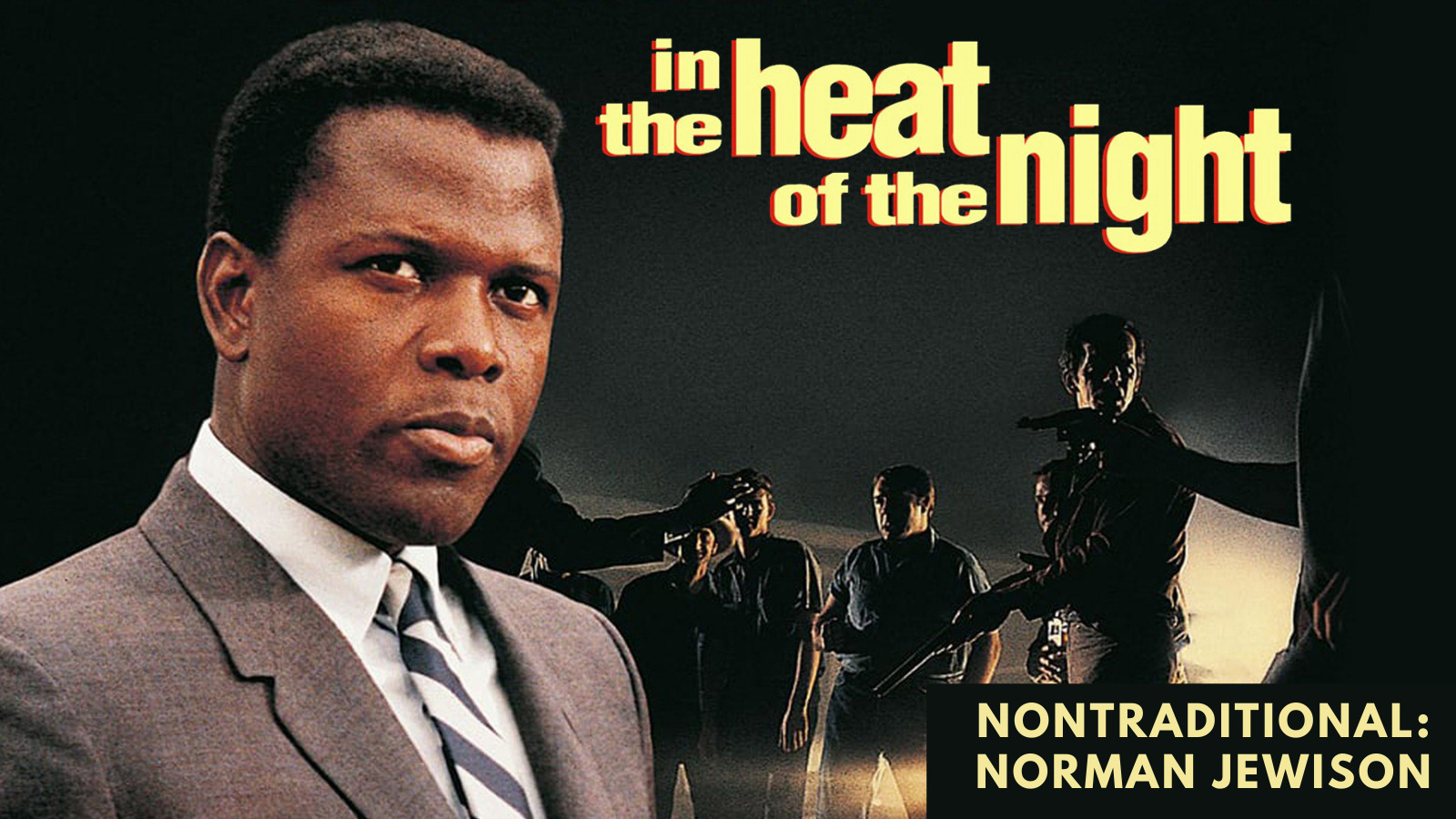
Welcome to a journey into the captivating world of the classic film “In the Heat of the Night.” Released in 1967, this crime drama directed by Norman Jewison has become an iconic piece of cinema. Set in a small Mississippi town during the civil rights movement, the film follows the story of a black detective from Philadelphia who finds himself embroiled in a murder investigation. With its gripping storyline, powerful performances, and timeless themes of racism and justice, “In the Heat of the Night” has left an indelible mark on the history of American cinema. In this article, we will delve into the depths of this remarkable film, uncovering 39 fascinating facts that will highlight its significance and shed light on the behind-the-scenes details that made it a true cinematic gem.
Key Takeaways:
- “In the Heat of the Night” is a groundbreaking movie that tackled racism and prejudice, won five Academy Awards, and became a symbol of change and progress in the film industry.
- Sidney Poitier’s portrayal of Virgil Tibbs broke barriers and continues to inspire audiences, showcasing the enduring relevance and impact of the film over 50 years later.
“In the Heat of the Night” was released in 1967.
This crime drama film, directed by Norman Jewison, made its debut to the world in the late 1960s.
It is based on the novel by John Ball.
The movie is an adaptation of John Ball’s novel of the same name, which was published in 1965.
The film stars Sidney Poitier as Virgil Tibbs.
Sidney Poitier delivers a stunning performance as Virgil Tibbs, a skilled detective from the Philadelphia Police Department.
Rod Steiger plays the role of Police Chief Bill Gillespie.
Rod Steiger brings the character of Police Chief Bill Gillespie to life with his powerful and nuanced portrayal.
It tackles topics of racism and prejudice.
The movie explores the underlying racial tensions in a small southern town during the civil rights movement.
“In the Heat of the Night” won five Academy Awards.
The film was recognized and celebrated for its exceptional storytelling and performances, ultimately winning Best Picture, Best Actor, Best Adapted Screenplay, Best Editing, and Best Sound.
The movie’s theme song, “In the Heat of the Night,” was performed by Ray Charles.
The soulful and captivating theme song, sung by the legendary Ray Charles, perfectly captures the essence and mood of the film.
The movie was filmed on location in Sparta, Illinois.
The filmmakers chose Sparta as the backdrop for the town in which the story takes place, lending authenticity to the setting.
“In the Heat of the Night” was a box office success.
The film was well-received by audiences worldwide and became one of the highest-grossing films of 1967.
It was one of the first films to prominently feature a black actor in a leading role.
Sidney Poitier’s portrayal of Virgil Tibbs broke barriers and paved the way for more diverse representation in Hollywood.
The movie was praised for its powerful and thought-provoking social commentary.
Through its compelling narrative, the film shed light on the deep-rooted racial prejudices that plagued society at the time.
Sidney Poitier won the Academy Award for Best Actor for his performance.
Poitier’s exceptional acting skills were recognized and honored by the Academy, solidifying his status as one of the greatest actors of his generation.
The movie has been deemed culturally significant by the Library of Congress.
In 2002, “In the Heat of the Night” was selected for preservation in the United States National Film Registry, recognizing its historical and cultural importance.
The film’s screenplay was written by Sterling Silliphant.
Sterling Silliphant successfully adapted John Ball’s novel into a captivating screenplay that brought the story to life on the big screen.
The character of Virgil Tibbs became an iconic figure in cinema.
Sidney Poitier’s portrayal of Virgil Tibbs has become legendary, showcasing a strong and intelligent black protagonist.
The movie’s production budget was $2 million.
With a modest budget, the filmmakers managed to create an impactful and visually stunning film.
It was one of the first films to address racism in the South.
In the Heat of the Night” tackled the issue of racism head-on, challenging societal norms and sparking important conversations.
The film’s success led to two sequels and a television series.
The popularity of “In the Heat of the Night” spawned a trilogy of sequels and a successful television series that further expanded and explored the world of Virgil Tibbs.
The movie has a runtime of 1 hour and 50 minutes.
The tightly paced film takes viewers on a captivating journey within a concise timeframe.
The film received widespread critical acclaim.
In the Heat of the Night” was praised by critics for its engaging story, powerful performances, and timely social commentary.
It became a symbol of change and progress.
The film’s impact resonated beyond the movie theater, becoming a cultural touchstone for social change and equality.
The movie explores the dynamics between law enforcement and the black community.
Through the interactions between Virgil Tibbs and the local police, the movie delves into the complex relationship between law enforcement and minority communities.
The film’s iconic line, “They call me Mister Tibbs!” has become a memorable catchphrase.
Sidney Poitier’s delivery of this powerful line became an instant classic and has since been referenced and parodied in popular culture.
“In the Heat of the Night” is known for its gripping and suspenseful scenes.
The film expertly builds tension, keeping viewers on the edge of their seats throughout.
It delves into the theme of identity and self-discovery.
Virgil Tibbs goes on a personal journey as he navigates through a town filled with prejudice, ultimately finding his own sense of identity and purpose.
The film showcases the talent of a diverse cast.
From Poitier and Steiger to the supporting actors, each member of the ensemble brings depth and nuance to their respective roles.
The movie’s success helped break down racial barriers in the film industry.
“In the Heat of the Night” played a significant role in challenging Hollywood’s conventions and paving the way for more diverse storytelling.
The film addresses the complexities of justice.
Through its exploration of a murder investigation, the movie raises questions about fairness, prejudice, and the search for truth.
It confronts the audience with uncomfortable truths about racism.
In the Heat of the Night” forces viewers to confront their own biases and encourages discussions about systemic racism.
The movie features a memorable score composed by Quincy Jones.
Quincy Jones‘ haunting and evocative score perfectly complements the film’s tense and dramatic moments.
The film’s success inspired other socially conscious movies.
In the Heat of the Night” served as a catalyst for a wave of films that tackled important social issues and highlighted the need for equality.
The movie’s release coincided with significant events in the civil rights movement.
Released just a few years after major civil rights milestones, the film resonated with audiences who were grappling with the ongoing struggle for equality.
It was nominated for seven Academy Awards.
In addition to its five wins, the film received nominations for Best Director, Best Sound Editing, and Best Cinematography.
The movie’s dialogue is sharp and impactful.
The script is filled with memorable lines that highlight the social and racial tensions across the narrative.
It portrays the South as a character itself.
The movie depicts the Southern setting as a complex and integral part of the story, rather than just a backdrop.
The film remains relevant in today’s society.
Despite being released over 50 years ago, “In the Heat of the Night” continues to resonate with audiences, reflecting the enduring nature of its themes.
The movie’s success propelled Sidney Poitier’s career even further.
Sidney Poitier’s captivating performance solidified his status as one of the most influential actors of his time and opened doors for future opportunities.
The cinematography captures the tension and atmosphere of the story.
The skillful use of lighting, framing, and camera movement enhances the intensity of the film and adds depth to the narrative.
“In the Heat of the Night” continues to be celebrated as a cinematic masterpiece.
The film’s enduring legacy is a testament to its impact and importance in the realm of socially conscious storytelling.
There you have it, 39 fascinating facts about the movie “In the Heat of the Night.” From its thought-provoking social commentary to its outstanding performances, this film has left an indelible mark on cinema history.
Conclusion
In conclusion, “In the Heat of the Night” is a timeless classic that has left a lasting impact on the world of cinema. This groundbreaking film not only tackled important social issues such as racism and prejudice but also delivered an intriguing and suspenseful storyline. With powerful performances by Sidney Poitier and Rod Steiger, the movie captivated audiences and garnered critical acclaim.From its memorable characters to its thought-provoking themes, “In the Heat of the Night” continues to resonate with viewers today. The film’s success was evident through its multiple Academy Award wins, including Best Picture, Best Actor, and Best Adapted Screenplay. Its lasting legacy has paved the way for future films that address important social and cultural issues, making it a true cinematic masterpiece.If you haven’t had the chance to experience this cinematic gem, be sure to add “In the Heat of the Night” to your must-watch list. Its compelling storytelling, exceptional performances, and relevance to societal issues make it an absolute must-see for any movie lover.
FAQs
Q: When was “In the Heat of the Night” released?
A: “In the Heat of the Night” was released in 1967.
Q: Who are the main actors in the movie?
A: The main actors in “In the Heat of the Night” are Sidney Poitier and Rod Steiger.
Q: What awards did “In the Heat of the Night” win?
A: The film won multiple Academy Awards, including Best Picture, Best Actor, and Best Adapted Screenplay.
Q: What is the plot of the movie?
A: “In the Heat of the Night” follows a black detective from Philadelphia who gets embroiled in a murder investigation in a racially tense Southern town.
Q: Is “In the Heat of the Night” based on a book?
A: Yes, the movie is based on the novel of the same name by John Ball.
If you're fascinated by the talent behind "In the Heat of the Night," explore 23 astounding facts about Rod Steiger, the film's brilliant co-star. For those who love a good murder mystery, check out 35 intriguing facts about the movie "Manhattan Murder Mystery." And if you're interested in more films that tackle racial tension, don't miss our article on 39 facts about "The Defiant Ones," another groundbreaking classic that showcases the power of cinema to address important social issues.
Was this page helpful?
Our commitment to delivering trustworthy and engaging content is at the heart of what we do. Each fact on our site is contributed by real users like you, bringing a wealth of diverse insights and information. To ensure the highest standards of accuracy and reliability, our dedicated editors meticulously review each submission. This process guarantees that the facts we share are not only fascinating but also credible. Trust in our commitment to quality and authenticity as you explore and learn with us.


